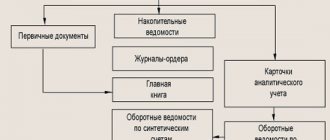Determination methods
In order to implement correct and legal taxation, tax legislation provides for such a concept as transactions between related parties. They are, on one of the grounds, recognized as companies, the share of participation of one of which in another exceeds 25%. In this case, it is necessary to correctly determine these same shares of participation.
Since establishing the status of interdependent persons requires that the share of participation of one company in the activities of another exceeds 25%, both direct and indirect influence are considered participation. Moreover, each share of a particular participation is calculated differently.
It is noteworthy that when calculating and determining shares, the participation of securities in the management or influence of one company on another is not taken into account. Provided that these securities were obtained by means of a loan under Russian or foreign law.
The law provides that when determining shares, securities will be taken into account for the person who is their seller under a repurchase agreement (securities purchase and sale agreement) or a creditor. That is, the share of the person who does not own the securities in the organization, but is their original owner (the seller or the one who lends them out), will be taken into account.
It is established by law that when calculating the share, the participation of foreign companies or structures (should be understood as a separate entity, and not the entire structure), which are not a legally separate entity, is taken into account. But only if the person representing the structure is its sole controlling person.
Through a common founder
Organizations are recognized as interdependent if the same person directly and (or) indirectly participates in them and the share of such participation in each organization is more than 25 percent (clause 3 of Article 105.1 of the Tax Code of the Russian Federation).
Let's assume that Ivanov owns a share of 35 percent in the authorized capital and 30 percent in the authorized capital. and "B" are interdependent.
Now let’s say that Ivanov owns a share of 35 percent and 15 percent of company B. In this case, “B” is not recognized as interdependent, because Ivanov’s share in “B” does not exceed 25 percent.
Similar rules apply if there is a legal entity instead of Ivanov. The rules for determining the size of the share of indirect participation for both individuals and legal entities are established in clause 3 of Art. 105.2 of the Tax Code of the Russian Federation (clause 5 of Article 105.2 of the Tax Code of the Russian Federation).
Direct participation and share
Direct participation means direct participation in the activities or capital of a company or organization of another organization or company, as well as a specific private individual. That is, one company must directly affect the capital or economic activity of another, which is reflected in the relevant documents.
At the same time, tax legislation provides for three methods for calculating the share of direct direct participation in the capital or economic activities of a company:
- by counting the voting shares owned by one company in another company;
- by calculating the share owned by one company in the capital of another company;
- by calculating the share owned by one company, which is directly proportional to the number of existing members in the other company.
The last method is used if and only if it is not possible to calculate and calculate the share of participation using the first two methods.
Among all voting shares of the company, preferred shares and ordinary shares are distinguished. For calculations using the first method, only ordinary shares are always taken into account, provided that their share in the capital is much higher than preferred shares.
For example, there is a company in which , “M” and “K” participate in the capital. The latter has 5 million rubles in the company (5,000 ordinary shares), “P” has 6 million rubles (6,000 ordinary shares), and “M” has 3 million rubles (3,000 ordinary shares).
Together they invested 14 million rubles in capital. In this case, the participation share will be: 5 million rubles/14 million rubles * 100% = 35%. That is, the company falls under the category of interdependent persons, therefore all transactions between and “B” will be carried out under special conditions different from market ones.
To calculate the second method, both preferred shares and ordinary shares are taken into account. So, if the share of preferred shares accounts for: - 4 million rubles (for example, 200 shares), for - 3 million rubles (for example, 150 shares), and for - 1.5 million rubles (700 shares, for example), then the calculation will be something like this:
- in total there are 9 million rubles in shares, the share of participation is 9/22.5*100%=40%
- in total there are 9 million rubles in shares, the share of participation is 9/22.5*100%=40%;
- In total there are 4.5 million rubles in shares, the share of participation is 4.5/22.5*100%=20%.
If it is not possible to allocate shares, then the third method is used, when all active participants-owners of the company are identified, and the funds are divided between them.
Determining a person’s share of participation in an organization is carried out according to the same principle: you need to know how many shares he and his family own in the company, or if you don’t know, use the method of the proportional number of participants.
Indirect participation and share
In order to determine indirect participation and its share, it is first verified how many companies are involved in the chain of interdependence, the direct share of each in the activities and capital of the next is allocated, and only then the indirect share is allocated. But these are not all options.
There are several ways by which one can determine the share of participation of one company in another, as well as the share of participation of an individual in the activities of the company or its capital:
- if there are several sequences of participation of companies or persons in the capital and economic activities of the company, then to determine the indirect share of participation, all existing indirect shares are summed up;
- the allocation of each related company's direct interest in the activities of another company or its capital, and then the allocation of an indirect share;
- the indirect share is determined by multiplying the shares of the first direct companies in the chain of interaction between two companies, and then multiplying the result by the shares of the subsequent companies in the chain until the shares of the companies run out.
For example, there are four companies: A, B, B, D. Their chain of interaction in direct shares is expressed in the sequence: 25%, 35%, 40%. The calculation of the share of indirect participation in this case will be: 0.25*0.35*0.4*100%=3.5%.
The procedure for determining a person’s share of participation in an organization is established at the legislative level, therefore any other determination procedure cannot be applied, since it will be considered illegal.
How to determine the share of actual participation of one organization in another in complex cases?
One of the main criteria for recognizing persons as interdependent is the presence of a share of direct and (or) indirect participation of one organization in another exceeding 25%.
In practice, schemes for determining interdependence can be quite complex: a large number of participants, the presence of “cross” participation and/or “ring” ownership.
In such cases, it is initially necessary to determine the share of direct participation of one organization in another (methods for determining the share of direct participation of one organization in another). If they are defined, then calculating the actual participation will not be difficult. The Ministry of Finance of the Russian Federation, in the presence of “cross” participation and/or “ring” ownership, suggests using one of two methods: geometric progression or matrix method. From our point of view, the matrix method is the most universal.
Method 1: Matrix method.
To find the actual share of participation of one organization in another, an inverse matrix is used, which is calculated using the formula:
Example
. Diagram 1 shows the shares of direct participation of organizations. It is necessary to determine the actual share of participation of the organization in other organizations.
Based on the diagram, we will draw up a table that will reflect the share of direct participation of the organization in other organizations:
Direct participation, in unit shares
| Organizations | A | B | C | D | E | F |
| A | — | 0.55 | — | — | — | — |
| B | — | — | 0.4 | — | — | — |
| C | 0.3 | — | — | — | — | — |
| D | — | 0.45 | — | — | — | — |
| E | 0.7 | — | — | — | — | — |
| F | — | — | 0.6 | — | 0.3 | — |
Accordingly, matrix A
as follows:
Let's construct the identity matrix E
for a matrix
A
having six rows and six columns:
Let's calculate the matrix difference:
Using any online calculator for finding the inverse matrix (for example, on the sites https://www.math-pr.com/ or https://ru.onlinemschool.com/), we calculate the inverse matrix N:
Thus, the actual participation of an organization in another organization is as follows:
Actual participation, in fractions of a unit
| Organizations | A | B | C | D | E | F |
| A | — | 0.59 | 0.24 | — | — | — |
| B | 0.13 | — | 0.43 | — | — | — |
| C | 0.32 | 0.18 | — | — | — | — |
| D | 0.06 | 0.48 | 0.19 | — | — | — |
| E | 0.75 | 0.41 | 0.17 | — | — | — |
| F | 0.42 | 0.23 | 0.69 | — | 0.3 | — |
That is, he actually participates in LLC “B” by 59%, and in LLC “A” by 42%.
When applying this method, the procedure for determining the share of actual participation is similar to the algorithm for determining the share of indirect participation (determining the share of indirect participation of one organization in another).
Example
. Diagram 2 shows the shares of direct participation of organizations. It is necessary to determine the actual participation of LLC “D” in the capital of LLC “B”.
“CROSS” PARTICIPATION OF ORGANIZATIONS IN CAPITAL
The procedure for calculating actual participation will be as follows:
Thus, the share of actual participation of LLC “D” in LLC “B” is 57.69%.
An infinite number of sequences can be simplified by transforming it mathematically. The actual participation of LLC "D" in the capital of LLC "B" is a geometric progression and is as follows:
— direct share of participation of organization i in organization j;
— the actual share of participation of organization i in organization j.
Multiply 0.5769 by 100% and get 57.69%.
Source – Letter of the Ministry of Finance of the Russian Federation dated July 2, 2013 N OA-4-13/11912.
Source
Circumstances when determining the share of participation
All circumstances by which a person’s shares in a company are determined are prescribed at the legislative level, therefore all additional circumstances not specified in the law are taken into account only by the decision and discretion of the court and in no other way.
At the same time, the judicial authorities rely on all possible options, take into account and consider not only the regulatory legal acts that determine the procedures for allocating shares, but also the practice of their colleagues, as well as the opinion of the Supreme Court of the Russian Federation.
On their own, companies and persons associated with them cannot determine what circumstances may be additional for the allocation of a direct or indirect share in capital or economic activity, but they can provide the court with the necessary materials that may be evidence of interdependence.
The main legal circumstances include:
- participation or non-participation of securities received under a loan agreement for these securities;
- participation or non-participation of securities received under a purchase and sale agreement for these securities;
- participation or non-participation of a foreign structure, provided that it is not formed into a separate legal entity.
In each case, all circumstances are carefully studied. So, for example, if in the first part of the purchase and sale agreement the company fulfilled all the conditions, but in the second part not all conditions were met, then the securities will not play a role at all in determining the shares. The basis will be the general rules established for all companies - by determining the number of shares, and from their number and participation shares.
In this case, indirect participation implies participation in the relations of several companies through third parties. For example, there are three companies that have little direct connection with each other, but third parties influence the economic results of each of these companies.
It is quite simple to prove that relationships really influence the results of activities in the economic sphere: by comparing similar transactions between persons who under no circumstances can be interdependent persons.
Author of the article
Features of indirect disposal of votes (rights) in a strategic society
It can be assumed that for the majority of people faced with the application of Law No. 57[1], the question of the essence of the concept of indirect disposal of votes of a strategic company does not represent any big mystery. It would seem that indirect disposal is simply the disposal of votes through third parties, for example through a chain of ownership from a foreign company to Russian society. And most often, such a chain is built quite simply: there is a single or majority participant who exercises control at each stage. In such a situation, the issue of indirect control may not arise, since in the vast majority of cases control is actually present.
However, do not forget that Law No. 57 provides for reduced approval/control thresholds for a number of entities and for such cases also uses the construction of “indirect” acquisition or acquisition “through third parties” (for example, in the case of the acquisition directly or indirectly of 25% of shares ( shares) and more in the strategic subsoil user [2]). In this case, determining the presence or absence of indirect ownership may present a more complex issue even in a seemingly simple situation.
Let's imagine that companies A and B own 75% and 25% of the votes in company B, respectively. At the same time, company B owns 100% of the votes in strategic company D. Does this mean that company B indirectly owns 25% of the votes in company D?
It may seem to some that the answer is obvious and that the indirect control of votes is obvious. For example, according to the rules provided for by the Tax Code of the Russian Federation, the share of indirect participation will indeed be 25%.
However, if you think about it, this structure in itself is not enough to make such a conclusion, because based on the definition of the concept of indirect disposal of votes (clause 4 of Article 6 of Law No. 57), the key feature is obtaining the opportunity to “actually dispose of votes” through third parties persons In such a situation, the presence of 25% of the votes in company B does not at all mean that company B will be able to actually control a similar block of votes in company D. Much in this situation will depend on the provisions of the charter and a possible shareholders agreement, and the final conclusion may turn out to be opposite.
This means that the calculation of the share of indirect participation, used for the purposes of tax legislation, cannot and should not be used in its pure form to determine the share of indirect participation under Law No. 57.
At the same time, when coming to this conclusion, it must be taken into account that the FAS actually applies the corresponding calculation method in practice. An example of this is the case related to the participation of the Total group in, a joint venture between Total and Novatek.
The fact is that, in addition to receiving a 10% stake in Arctic LNG-2, Total owned 19.4% of Novatek itself, whose share in Arctic LNG-2, taking into account the transaction, was 90%. It turns out that if we apply the calculation of the share of indirect participation in its pure form (as the antimonopoly authority did), it will be 27.46%, which exceeds the 25% threshold for approving transactions in relation to subsoil users.
Is this approach correct? In my opinion, it is incorrect to draw such a conclusion without analyzing what rights a 19.4% stake in Novatek gives and whether it actually allows you to control votes in subsidiaries. Nevertheless, the use of this approach was publicly confirmed by the regulator without any reservations about conducting an analysis of other circumstances. This means that ignoring the results of the relevant calculations is quite risky, given the general extremely conservative approach of the antimonopoly authority to the interpretation of Law No. 57[3].
Another interesting example related to the indirect exercise of rights in relation to a strategic company is the acquisition of blocking rights. At the same time, what is interesting here is not the fact of obtaining indirect blocking rights, which everyone is already accustomed to, but the mechanism for obtaining such rights.
Let's say there is a Russian company A, the shareholders of which are a foreign company controlled by a citizen of the Russian Federation who is a tax resident of Russia and has no other citizenship, and a foreign company controlled by a foreign state. These shareholders own 85% and 15% of the shares, respectively. They also entered into a shareholder agreement, according to which the minority foreign participant has the right to block[4] in relation to the subsidiaries of company A. Next, company A makes a transaction to acquire 100% of the shares of strategic company B, as a result of which the minority participant of company A receives blocking rights in regarding company B.
Does this situation entail the obligation of the minority participant to agree in terms of Law No. 57?
On the one hand, the relevant participant did not make any transaction, as required by Part 3 of Art. 2 of Law No. 57. On the other hand, clause 5, part 1, art. 7 of this law speaks of the need to coordinate transactions aimed at acquiring blocking rights in strategic companies by a foreign state.
Does this phrase mean that the transaction may be carried out by another person, have a completely different subject, but as a result of this transaction, a foreign state may obtain blocking rights in relation to the acquired company and, accordingly, such a transaction is subject to approval?
In my opinion, such an interpretation does not directly follow from Law No. 57. As mentioned above, the provisions of Part 3 of Art. 2 indicate the need for such a transaction to be carried out by a foreign state (an entity controlled by it).
Moreover, if Law No. 57 really took this situation into account, then it would be more obvious to use the construction of “transactions as a result of which a foreign state acquires blocking rights in strategic companies,” as is, for example, done in Part 3.1 of Art. 7 regarding the need to agree on “other actions as a result of which a foreign investor acquires control rights.” However, there is no such wording in the law.
At the same time, as we remember, the position of the antimonopoly authority is often more conservative and involves a more substantial interpretation. So in this case: to a request for clarification of this situation, the regulator gave an unequivocal answer about the need to approve the relevant transaction with the Government Commission with reference to clause 5, part 1, art. 7 of Law No. 57.
But, as in the case of indirect calculation, the question is not even in the essence of the answer and not in the approaches taken by the regulator (after all, the scope of regulation is very specific), but in the fact that frequent deviations from the text of the law create significant legal uncertainty for foreign investors, negatively affecting the corresponding microclimate and increasingly giving Law No. 57 a procedural character.
This uncertainty could well be eliminated by introducing comprehensive changes to Law No. 57, which would directly resolve numerous controversial situations and reflect the regulator’s practical approaches to its application. However, unfortunately, this is not happening yet, and for some reason the FAS prefers to provide clarifications outside the framework of regulatory legal acts, without using already proven package methods for making changes.
[1] Federal Law No. 57-FZ dated April 29, 2008 (as amended on July 31, 2020) “On the procedure for making foreign investments in business entities of strategic importance for ensuring the country’s defense and state security.”
[2] For the purposes of this note, we leave aside the reasonableness of the existence of a single 25% threshold for approval, which has logic from the point of view of joint stock companies, but no logic from the point of view of limited liability companies, since it does not even provide veto rights in regarding decisions taken by qualified majority vote. This threshold looks especially strange given the presence of separate thresholds in the Federal Law “On the Protection of Competition” in relation to joint-stock companies and limited liability companies.
[3] Interestingly, this is not the first case related to . In 2010, the court already dealt with the peculiarities of indirect control during the transaction for the acquisition of Yamal LNG OJSC (subsidiary) of 100% of the shares of Tambeyneftegaz OJSC and pointed out the need to analyze, including the constituent documents and features of corporate governance, in order to formulate a conclusion about indirect control voices. Then the FAS decision was canceled (see Resolution of the Ninth Arbitration Court of Appeal dated August 16, 2010 No. 09AP-17025/2010 in case No. A40-165513/09-17-1301).
[4] In the understanding of clause 5, part 1, art. 3 of Law No. 57.




